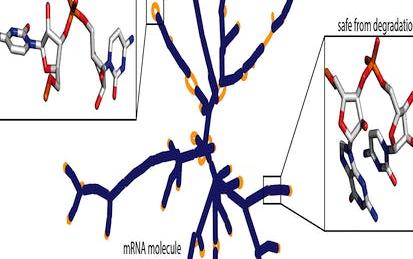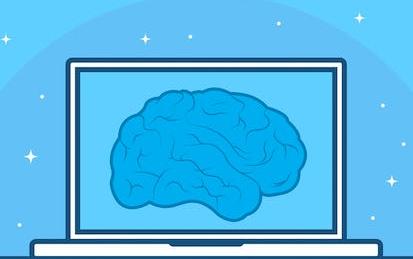

Our Courses

Supervised Machine Learning: Regression and Classification
In the first course of the Machine Learning Specialization, you will: • Build machine learning models in Python using popular machine learning libraries NumPy and scikit-learn. • Build and train supervised machine learning models for prediction and binary classification tasks, including linear regression and logistic regression The Machine Learning Specialization is a foundational online program created in collaboration between DeepLearning.AI and Stanford Online.
-
Course by

-
 Self Paced
Self Paced
-
 33 hours
33 hours
-
 English
English

Build and deploy a stroke prediction model using R
In this project, you’ll help a leading healthcare organization build a model to predict the likelihood of a patient suffering a stroke. The model could help improve a patient’s outcomes.
-
Course by

-
 Self Paced
Self Paced
-
 3 hours
3 hours
-
 English
English

PredictionX: Lost Without Longitude
Explore the history of navigation, from stars to satellites.
-
Course by

-
 Self Paced
Self Paced
-
 60
60
-
 English
English

PredictionX: Omens, Oracles & Prophecies
This course is an overview of divination systems, ranging from ancient Chinese bone burning to modern astrology.
-
Course by

-
 Self Paced
Self Paced
-
 English
English

Physical and Advanced Side-Channel Attacks
Software-based and physical side-channel attacks have similar techniques. But physical attacks can observe properties and side effects that are usually not visible on the software layer. Thus, they are often considered the most dangerous side-channel attacks. In this course, we learn both about physical side-channel attacks but also about more advanced software-based side channels using prefetching and branch prediction. You will work with these attacks and understand how to mitigate them.
-
Course by

-
 Self Paced
Self Paced
-
 English
English

Introduction to Astrophysics
Learn about the physical phenomena at play in astronomical objects and link theoretical predictions to observations.
-
Course by

-
 Self Paced
Self Paced
-
 18
18
-
 English
English

Predictive Analytics: Basic Modeling Techniques
What is Predictive Analytics? These methods lie behind the most transformative technologies of the last decade, that go under the more general name Artificial Intelligence or AI. In this course, the focus is on the skills that will allow you to fit a model to data, and measure how well it performs. We will be doing enough data science so that you get hands-on familiarity with understanding a dataset, fitting a model to it, and generating predictions.
-
Course by

-
 26
26
-
 English
English

Infectious Disease Transmission Models for Decision-Makers
During the COVID-19 pandemic, both the promise and perils of using infectious disease transmission models to make public health policy decisions became clearer than ever. Optimal use of modeled output requires that public health policy makers be informed consumers of models, that they understand the strengths and limitations of possible approaches, and they know the right questions to ask about the vulnerabilities of the model results.
-
Course by

-
 Self Paced
Self Paced
-
 4 hours
4 hours
-
 English
English

Deep Learning for Real Estate Price Prediction
In this hands-on guided project, we will predict real estate prices with deep learning. In this project, we will predict home sale prices in King County in the U.S. between May, 2014 and May, 2015 using several features such as number of bedrooms, bathrooms, view, and square footage. This guided project is practical and directly applicable to the real estate industry. You can add this project to your portfolio of projects which is essential for your next job interview.
-
Course by

-
 Self Paced
Self Paced
-
 2 hours
2 hours
-
 English
English

Natural Attenuation of Groundwater Contaminants: New Paradigms, Technologies, and Applications
Cleaning up the large number of groundwater contamination sites is a significant and complex environmental challenge. The environmental industry is continuously looking for remediation methods that are both effective and cost-efficient. Over the past 10 years there have been amazing, important developments in our understanding of key attenuation processes and technologies for evaluating natural attenuation processes, and a changing institutional perspective on when and where Monitored Natural Attenuation (MNA) may be applied.
-
Course by

-
 Self Paced
Self Paced
-
 28 hours
28 hours
-
 English
English

Deep learning in Electronic Health Records - CDSS 2
Overview of the main principles of Deep Learning along with common architectures. Formulate the problem for time-series classification and apply it to vital signals such as ECG. Applying this methods in Electronic Health Records is challenging due to the missing values and the heterogeneity in EHR, which include both continuous, ordinal and categorical variables. Subsequently, explore imputation techniques and different encoding strategies to address these issues. Apply these approaches to formulate clinical prediction benchmarks derived from information available in MIMIC-III database.
-
Course by

-
 Self Paced
Self Paced
-
 32 hours
32 hours
-
 English
English

Predicting Salaries with Decision Trees
In this 1.5 hour long project-based course, you will tackle a real-world prediction problem using machine learning.
-
Course by

-
 Self Paced
Self Paced
-
 2 hours
2 hours
-
 English
English

COVID-19 mRNA Vaccine Degradation Prediction
In this 2-hour long project-based course, you will learn how to predict mRNA Vaccine Degradation Rates at various positions of the molecule.
-
Course by

-
 Self Paced
Self Paced
-
 2 hours
2 hours
-
 English
English

Data Science Coding Challenge: Loan Default Prediction
In this coding challenge, you'll compete with other learners to achieve the highest prediction accuracy on a machine learning problem. You'll use Python and a Jupyter Notebook to work with a real-world dataset and build a prediction or classification model. Important Information: How to register? To participate, you’ll need to complete simple steps. First, click the “Start Project” button to register. Next, you’ll need to create a Coursera Skills Profile, which only takes a few minutes.
-
Course by

-
 Self Paced
Self Paced
-
 3 hours
3 hours
-
 English
English

PredictionX: John Snow and the Cholera Epidemic of 1854
An in-depth look at the 1854 London cholera epidemic in Soho and its importance for the field of epidemiology.
-
Course by

-
 Self Paced
Self Paced
-
 English
English

The Sun and the Total Eclipse of August 2017
A total eclipse is one of the most spectacular sights you can ever see! It looks like the end of the world may be at hand. There is a black hole in the sky where the sun should be. Pink flames of solar prominences and long silver streamers of the sun's corona stretch across the sky. It gets cold, and animals do strange things. People scream and shout and cheer, and remember the experience their whole life. But total eclipses are important scientifically as well. They let us see parts of the sun’s atmosphere that are otherwise invisible.
-
Course by

-
 Self Paced
Self Paced
-
 8 hours
8 hours
-
 English
English

Probability & Statistics for Machine Learning & Data Science
Newly updated for 2024! Mathematics for Machine Learning and Data Science is a foundational online program created by DeepLearning.AI and taught by Luis Serrano. In machine learning, you apply math concepts through programming. And so, in this specialization, you’ll apply the math concepts you learn using Python programming in hands-on lab exercises.
-
Course by

-
 Self Paced
Self Paced
-
 29 hours
29 hours
-
 English
English

XG-Boost 101: Used Cars Price Prediction
In this hands-on project, we will train 3 Machine Learning algorithms namely Multiple Linear Regression, Random Forest Regression, and XG-Boost to predict used cars prices.
-
Course by

-
 Self Paced
Self Paced
-
 3 hours
3 hours
-
 English
English

Artificial Intelligence Data Fairness and Bias
In this course, we will explore fundamental issues of fairness and bias in machine learning. As predictive models begin making important decisions, from college admission to loan decisions, it becomes paramount to keep models from making unfair predictions. From human bias to dataset awareness, we will explore many aspects of building more ethical models.
-
Course by

-
 Self Paced
Self Paced
-
 7 hours
7 hours
-
 English
English

Analysis of Algorithms
This course teaches a calculus that enables precise quantitative predictions of large combinatorial structures. In addition, this course covers generating functions and real asymptotics and then introduces the symbolic method in the context of applications in the analysis of algorithms and basic structures such as permutations, trees, strings, words, and mappings. All the features of this course are available for free.
-
Course by

-
 Self Paced
Self Paced
-
 21 hours
21 hours
-
 English
English

Practical Decision-Making Using No-code ML on AWS
In this course, you will discover how to solve business problems with machine learning, no coding required. You will explore Amazon SageMaker Canvas, a visual point-and-click interface that allows you to generate accurate ML predictions without requiring any machine learning experience or having to write a single line of code. At the end of the course, you will walk away understanding how to make better business decisions using no-code machine learning.
-
Course by

-
 Self Paced
Self Paced
-
 5 hours
5 hours
-
 English
English

Algebra: Elementary to Advanced - Polynomials and Roots
This course is the final course in a three part algebra sequence, In this course, students extend their knowledge of more advanced functions, and apply and model them using both algebraic and geometric techniques. This course enables students to make logical deductions and arrive at reasonable conclusions. Such skills are crucial in today's world. Knowing how to analyze quantitative information for the purpose of making decisions, judgments, and predictions is essential for understanding many important social and political issues.
-
Course by

-
 Self Paced
Self Paced
-
 9 hours
9 hours
-
 English
English

Data Analysis in R: Predictive Analysis with Regression
Increasingly, predictive analytics is shaping companies' decisions about limited resources. In this project, you will build a regression model to make predictions. We will start this hands-on project by exploring the dataset and creating visualizations for the dataset. By the end of this 2-hour-long project, you will be able to build and interpret the result of a simple linear regression model in R. Also, you will learn how to perform model assessments and check for assumptions using diagnostic plots.
-
Course by

-
 Self Paced
Self Paced
-
 3 hours
3 hours
-
 English
English

Breast Cancer Prediction Using Machine Learning
In this 2 hours long project-based course, you will learn to build a Logistic regression model using Scikit-learn to classify breast cancer as either Malignant or Benign. We will use the Breast Cancer Wisconsin (Diagnostic) Data Set from Kaggle. Our goal is to use a simple logistic regression classifier for cancer classification. We will be carrying out the entire project on the Google Colab environment. You will need a free Gmail account to complete this project. Please be aware of the fact that the dataset and the model in this project, can not be used in real-life.
-
Course by

-
 Self Paced
Self Paced
-
 2 hours
2 hours
-
 English
English

Identify Damaged Car Parts with Vertex AutoML Vision
This is a self-paced lab that takes place in the Google Cloud console. Vertex AI brings together the Google Cloud services for building ML under one, unified UI and API. In Vertex AI, you can now easily train and compare models using AutoML or custom code training and all your models are stored in one central model repository. These models can now be deployed to the same endpoints on Vertex AI. AutoML Vision helps anyone with limited Machine Learning (ML) expertise train high quality image classification models.
-
Course by

-
 Self Paced
Self Paced
-
 2 hours
2 hours
-
 English
English



